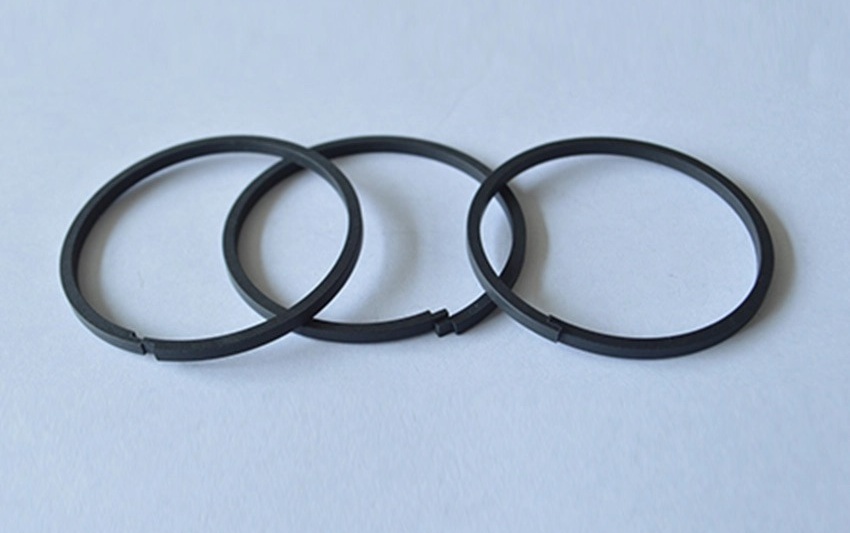In the compressor – the industrial “heart” – reliably sealing high-pressure gases or liquids is critical for efficient and safe operation. Among sealing solutions, mechanical face seals stand out as the preferred choice for modern compressors, especially in high-speed, high-pressure, and critical applications. At the core of this system lies the precision-matched pair of sealing rings (rotating ring and stationary ring), often referred to as ”seal faces.”
1. Core Mission: Zero-Leakage Containment
The primary function is unequivocal:
- Prevent Medium Leakage: Stop high-pressure gas/liquid (refrigerant, air, process gas) from escaping along the shaft. Leaks cause product loss, environmental hazards (toxic/greenhouse gases), and safety risks (flammable substances).
- Exclusion of Contaminants: Block external air, moisture, dust, or debris. Contamination leads to corrosion (e.g., lubricant emulsification), component wear, and system failure.
- Pressure Integrity: Maintain operational pressure for efficiency. Leaks reduce pressure, increasing energy consumption.
- Extended Service Life: High-quality seals withstand high RPMs, pressure, temperature, and dry-running conditions, reducing downtime.
2. Precision Engineering: Dynamic Sealing Through Fluid Films
Sealing relies on lapped flat faces operating in unison:
- Rotating/Stationary Pair: The rotating ring spins with the shaft; the stationary ring fixes to the housing.
- Lapped Surfaces: Ultra-flat (λ/2 laser-grade) and smooth sealing faces contact under spring and hydraulic pressure.
- Microscopic Lubrication: A 2–5 µm fluid film (process fluid or barrier liquid) forms between faces to:
- Reduce friction (prevents wear)
- Enable sealability (fluid viscosity blocks leakage)
- Dissipate heat (from face friction)
- Balanced Dynamics: Spring load ensures contact; hydrodynamic pressure maintains the film. Imbalance causes failure (e.g., face distortion, particle ingress).
3. Material Selection: Engineered for Extremes
Seal faces follow a “hard vs. soft” pairing strategy. Critical properties: hardness, wear/corrosion resistance, thermal conductivity, and thermal shock resilience.
| Material Type | Hard Face (Typically Stationary) | Soft Face (Typically Rotating) |
|---|---|---|
| Primary Materials | Silicon Carbide (SiC): • Sintered (SSiC): Superior corrosion resistance • Reaction-Bonded (RBSiC): Higher toughness Dominant choice for harsh services (high P/T, corrosive media). |
Impregnated Graphite: • Metal-filled (Cu/Sb): Enhanced conductivity • Resin-filled: Chemical resistance Ideal paired with SiC. Tolerates minor solids embedment. |
| Tungsten Carbide (WC): • Ni-bound: Better corrosion resistance • Co-bound: Higher hardness Common in oil-lubricated compressors. |
Sintered SiC (SSiC): Used in “hard/hard” pairs for dry gas seals (DGS) or low-lubricity media. |
|
| Alumina Ceramic (Al₂O₃): Economical for low-P/T, clean services. |
Reinforced PTFE: Limited to low-P/T, highly corrosive, non-critical applications. |
4. Holistic Design: Beyond Faces
Seal reliability demands integration of:
- Secondary Seals: O-rings/V-rings (FKM/EPDM/PTFE) for static sealing.
- Spring Systems: Corrosion-resistant alloys for consistent face loading.
- Pressure Balancing: Balanced designs for >200 psig applications.
- Seal Support Systems: Flush plans (API Plan 11/32) for cooling/debris control.
Conclusion
Compressor mechanical seal faces are unsung heroes. Paired with precision engineering and purpose-built materials, they master the trifecta of speed, pressure, and aggression – delivering leak-free containment while maximizing uptime and environmental safety.
Post time: Jul-08-2025

